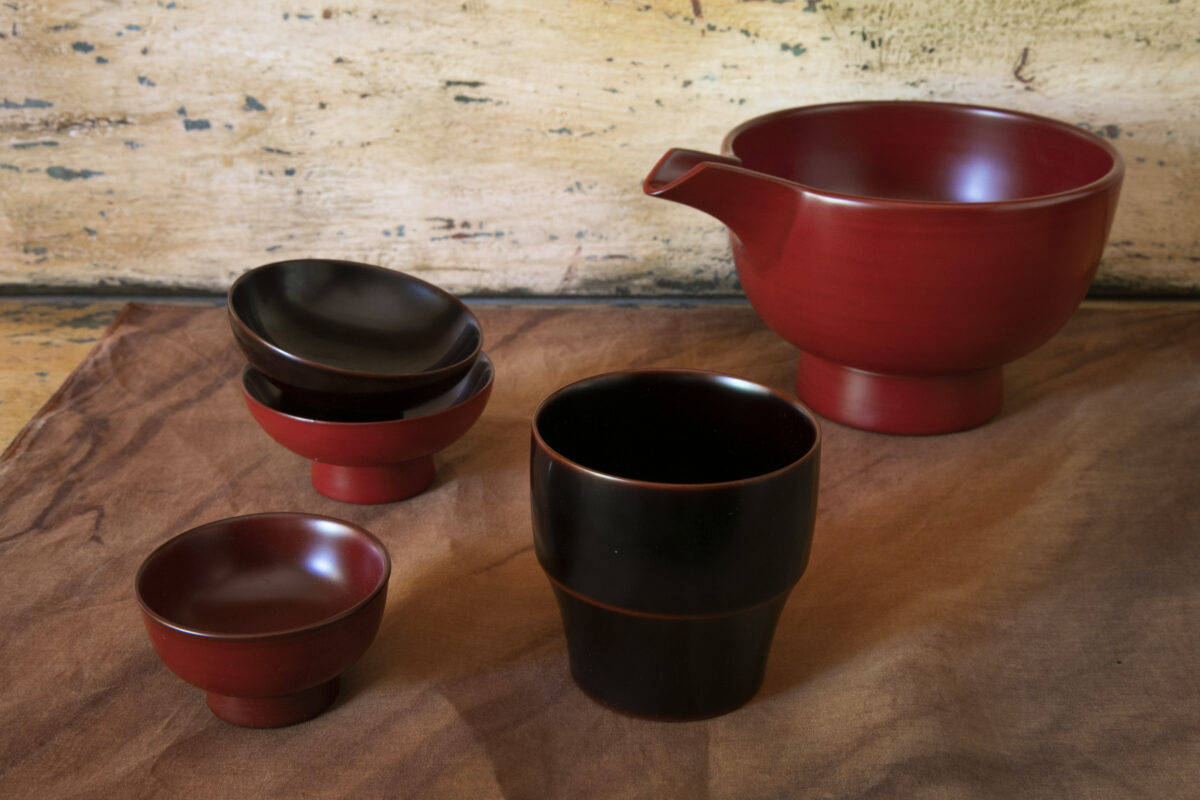
Tekiseisha – Joboji Collective is carrying the legacy of Japanese “urushi” lacquerware into the 21st century. The origin of lacquer work goes back to the Jomon period in Japan (14,000BCE). It has been used for many purposes, functional boxes, ornamental plates, and decorational panels are just a handful of items that were lacquered. Items painted in lacquer are viewed as particularly special and historically were often in the homes of the nobility and wealthy of Japan. Regional forms and decorative painting styles differ within Japan. This skill is now preserved by masters who are designated as ‘national treasures.’


Most remarkably, the art of lacquering has been passed down from generation to generation, with regional differences in forms and painting styles emerging over time. We are pleased to present the works of Yoko Sasaki, Makiko Baba, Takashi Iwadate, Yasuo Tamayama, and Yusuke Takahashi from Ninohe, Iwate Prefecture at the International Folk Art Market in Santa Fe from July 6th through July 9th. We are so thrilled to showcase the Joboji lacquerware handcrafted by Yoko Sasaki, Makiko Baba, Takashi Iwadate, Yasuo Tamayama, and Yusuke Takahashi from Ninohe in Iwate Prefecture.


The sap is harvested from the lacquer trees growing in Joboji prefecture in Japan. It is cured and the color can range from light to dark amber. The item being lacquered, often wood (though not limited to just wood), first cured and then painted with a base of crude lacquer. This allows for the material to become waterproof and sturdy. Next, an undercoating is applied–a mixture of lacquer and red oxide. After it has dried, the item is polished with water resistant paper. A second coating is applied and this process of coating and polishing is repeated six times. Lastly, a final coating is applied and the item is placed in a special room to dry so as lint and dust do not touch the item.
The Joboji area cultivates urushi trees since the jomon period (14,000BCE).


